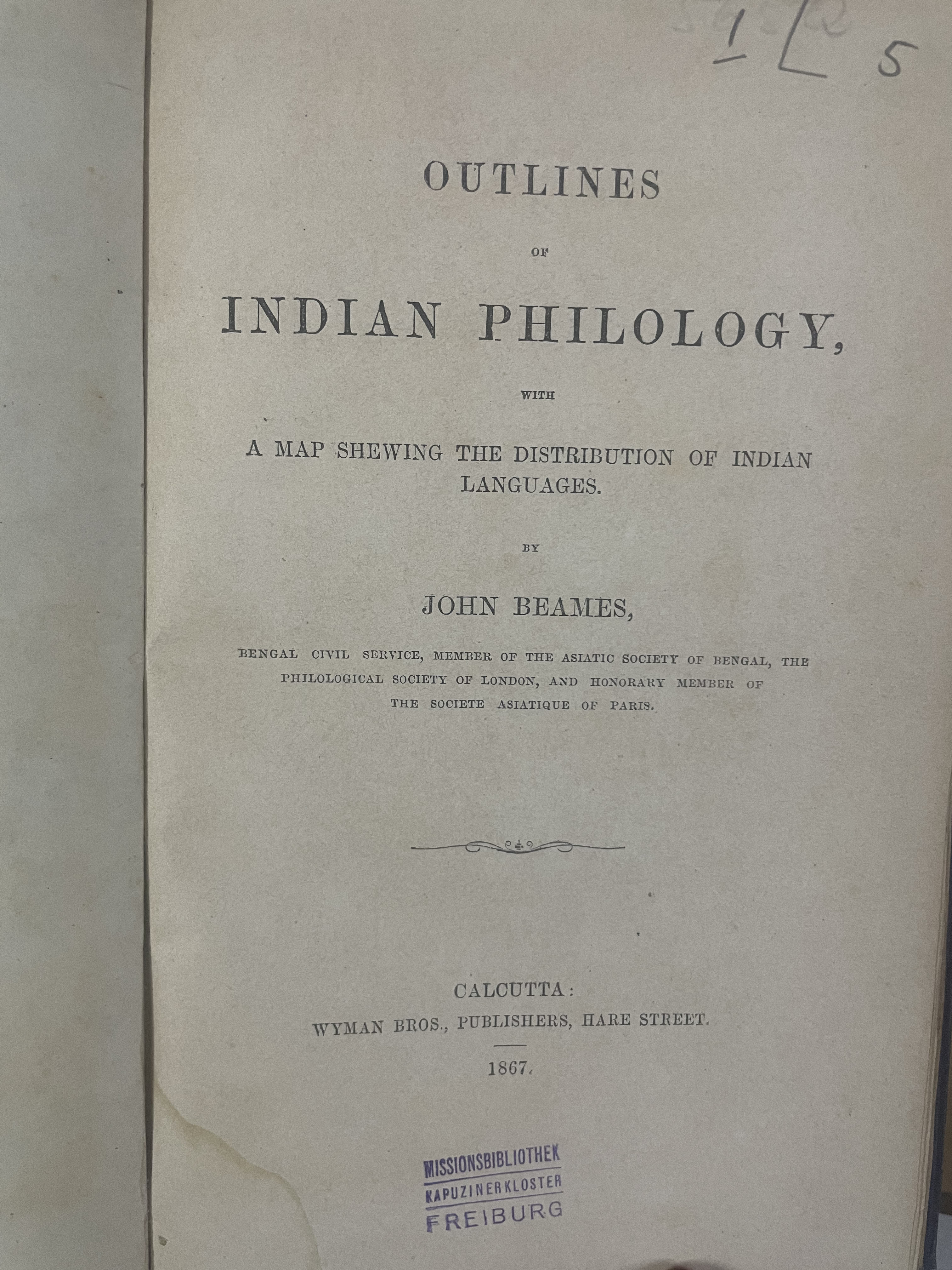Outlines of Indian Philosophy with a Map shewing The Distribution of Indian Languages

About
Summary
Exquisite
TOC
Details
Related
URL
Images
Overview
John Beames's Outlines of Indian Philology: With a Map Shewing the Distribution of Indian Languages, published in 1867 (though some sources list 1868), represents a significant contribution to the field of comparative linguistics and Indology during the British colonial period. Beames, an administrator in the Indian Civil Service (ICS), possessed a keen interest in and aptitude for languages, which enabled him to produce a detailed study of the Indo-Aryan languages. While the title might suggest a focus on philosophy, the work is primarily concerned with the philological study of Indian languages.Outlines of Indian Philology is a systematic exploration of the relationships between various Indo-Aryan languages. Beames sought to trace their origins, identify common features, and understand their evolution over time. The book includes a map illustrating the geographical distribution of these languages.
The book likely begins with an introduction to the field of philology, explaining its methods and goals. It probably discusses the historical context of language study in India, including the work of earlier scholars and the challenges of studying a diverse linguistic landscape.
The core of the book would consist of detailed analyses of individual Indo-Aryan languages, such as Sanskrit, Hindi, Bengali, Marathi, Gujarati, and Punjabi. For each language, Beames likely examined its phonology (sound system), morphology (word structure), syntax (sentence structure), and vocabulary. He traced the historical development of each language, identifying its origins and influences.
Beames would have compared and contrasted the different languages, identifying similarities and differences. He likely used the comparative method to reconstruct the common ancestor of the Indo-Aryan languages, known as Proto-Indo-Aryan. He probably explored the relationship between Indo-Aryan and other language families, such as Indo-European and Dravidian. The map included with the book would have visually represented the geographical distribution of the Indo-Aryan languages, illustrating their relationship to one another and to other language groups
Importance of Book
Pioneering Work: It was one of the earliest systematic studies of the Indo-Aryan languages, laying the foundation for future research in the field.
Comprehensive Analysis: The book offered a comprehensive analysis of the phonology, morphology, syntax, and vocabulary of the major Indo-Aryan languages.
Comparative Method: Beames effectively applied the comparative method to reconstruct the history of the Indo-Aryan languages and to identify their relationships to one another.
Influence on Scholarship: The book influenced subsequent generations of linguists and Indologists, shaping the direction of research in the field.
Key Themes
Comparative Linguistics: The book exemplifies the principles and methods of comparative linguistics, using systematic analysis and comparison to understand the relationships between languages.
Historical Linguistics: The book traces the historical development of the Indo-Aryan languages, providing insights into their origins, evolution, and diversification.
Language and Culture: Beames explores the relationship between language and culture, examining how language reflects and shapes the values, beliefs, and practices of different communities.
Colonial Knowledge Production: The book reflects the context of British colonial rule in India, showcasing the ways in which European scholars studied and interpreted Indian languages and cultures.
Cultural Significance
Outlines of Indian Philology is culturally significant as a product of the British colonial period and as a reflection of European interest in Indian languages and cultures. The book contributed to the construction of knowledge about India, shaping Western perceptions of the region and its people.
Beames's work also played a role in the development of Indian linguistics and the study of Indian languages by Indian scholars. His research provided a foundation for future generations of scholars who sought to understand and preserve their linguistic heritage. His support for the Odia language is a testament to his dedication.
Effects on Society
Promoting Linguistic Awareness: The book may have promoted greater awareness of the diversity and richness of Indian languages, both among Western scholars and among educated Indians.
Influencing Language Policy: Beames's research may have influenced language policy in British India, particularly in relation to the use of vernacular languages in education and administration.
Supporting Regional Languages: Beames's advocacy for the preservation and promotion of regional languages, such as Odia, may have contributed to the growth of regional linguistic and cultural identities.
Contributing to National Identity: By highlighting the common origins and shared features of the Indo-Aryan languages, Beames's work may have indirectly contributed to the development of a sense of Indian national identity.
Conclusion
The book likely concludes with a discussion of the implications of Beames's research for understanding Indian history, culture, and society. He probably addressed the question of language standardization and the role of language in shaping identity and social relations.
Title
Outlines of Indian Philosophy with a Map shewing The Distribution of Indian Languages
Author
John Beames
Name of Publisher
Wyman Bros Hare Street Calcutta
Publish Date
1867
Subject
John Beames\' work combines an overview of Indian philosophical traditions with a detailed look at the linguistic landscape of India, reflecting the colonial academic interest in cataloging and unders
Vintage
1801-1900
Number of Pages
60
Category
Philosophy
Sub Category
India
Rarity
RARE
